Mixing of Carbon Dioxide and Ethanol CFD Simulation
$180.00 $90.00 Student Discount
- The problem numerically simulates the Mixing of Carbon Dioxide and Ethanol using ANSYS Fluent software.
- We design the 2-D model by the Design Modeler software.
- We Mesh the model by ANSYS Meshing software.
- The mesh type is Structured, and the element number equals 73788.
- We perform this simulation as unsteady (Transient).
- We use the VOF Multi-Phase model to define carbon dioxide and ethanol.
- We use a UDF to define time-dependent pressure at the model’s inlet.
To Order Your Project or benefit from a CFD consultation, contact our experts via email (info@mr-cfd.com), online support tab, or WhatsApp at +44 7443 197273.
There are some Free Products to check our service quality.
If you want the training video in another language instead of English, ask it via info@mr-cfd.com after you buy the product.
Description
Mixing of Carbon Dioxide and Ethanol (VOF) CFD Simulation, ANSYS Fluent Tutorial
The present problem simulates mixing two substances, including carbon dioxide and ethanol, in a rectangular tank by ANSYS Fluent software. We perform this CFD project and investigate it by CFD analysis.
The present model is designed in three dimensions using Design Modeler software. The present model consists of a vertical rectangular tank for mixing materials with dimensions of 0.06 m * 0.3 m, which has an inlet section at the bottom with a width of 0.002 m.
The meshing of the model has been done using ANSYS Meshing software. The mesh type used for this geometry is Structured, and the element number is 73788.
Also, the transient solver is enabled due to the nature of the problem, which is to investigate changes in the volume fraction of the mentioned phases.
Mixing Methodology
The VOF multiphase model has been used to simulate the two phases of carbon dioxide and ethanol in the present model. The constituents of this process include carbon dioxide with a molecular weight of 44.00995 kg/kmol and ethanol with a molecular weight of 28.966 kg/kmol.
The input flow enters the tank from the lower part with a temperature of 300 K. The inlet flow pressure is variable and time-dependent. For this purpose, the pressure inlet boundary condition at the input boundary is used, which has a UDF in the form 8000000 + 66666.666 * t.
Also, the temperature of the entering flow is set to 300K. This simulation process was performed in 180 s with a time step of 0.5 s. Furthermore, the standard k-epsilon model and energy equation are used to solve the turbulent fluid equations and calculate temperature distribution within the domain.
Mixing Conclusion
At the end of the solution process, two-dimensional contours of temperature, pressure, velocity, and volume fraction for each phase are obtained.
These contours are obtained at the last second of the simulation process interval. For instance, as seen in ethanol volume fraction and velocity contours, a secondary flow will form within the domain and cause the mixing process.

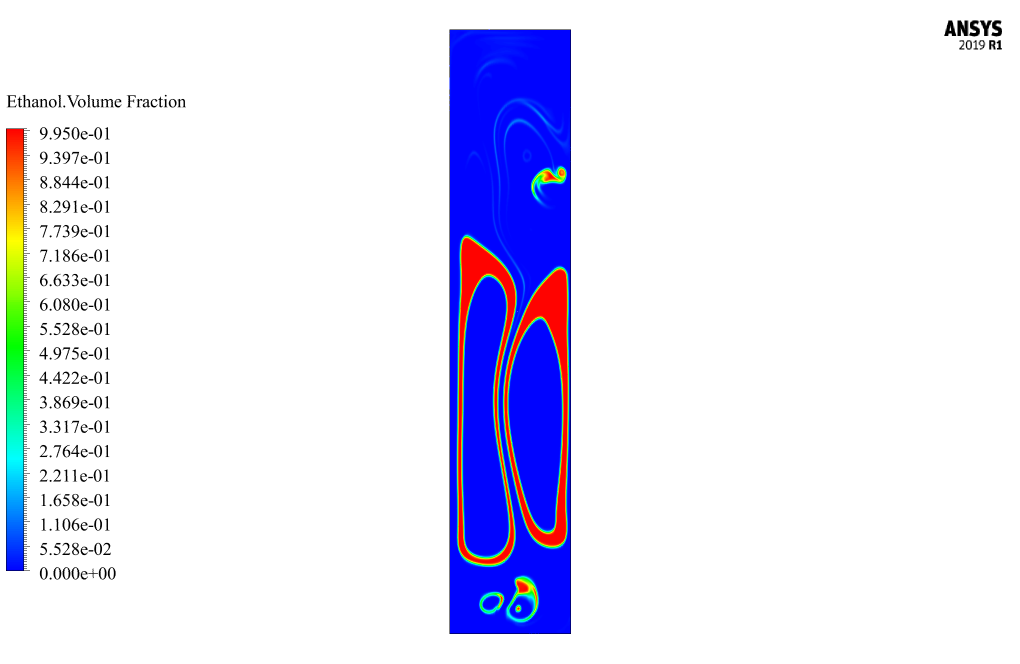
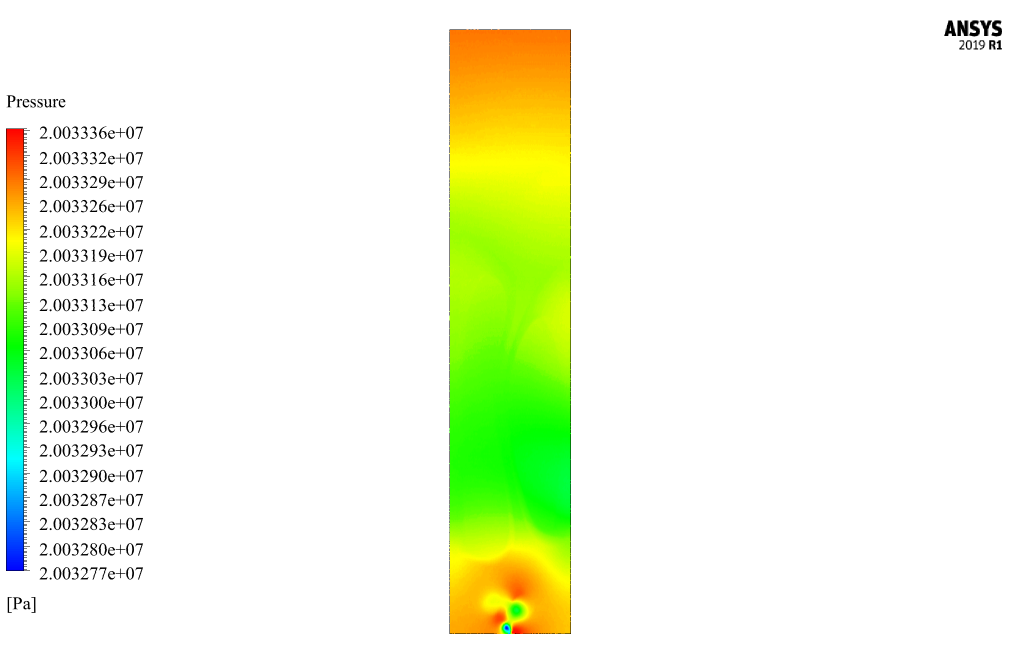
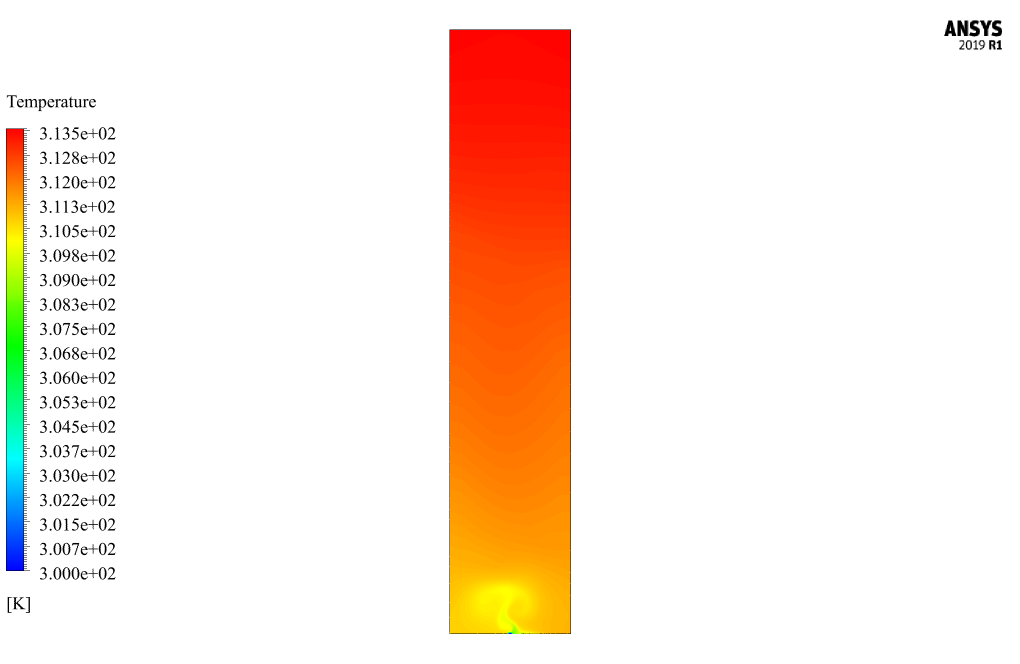
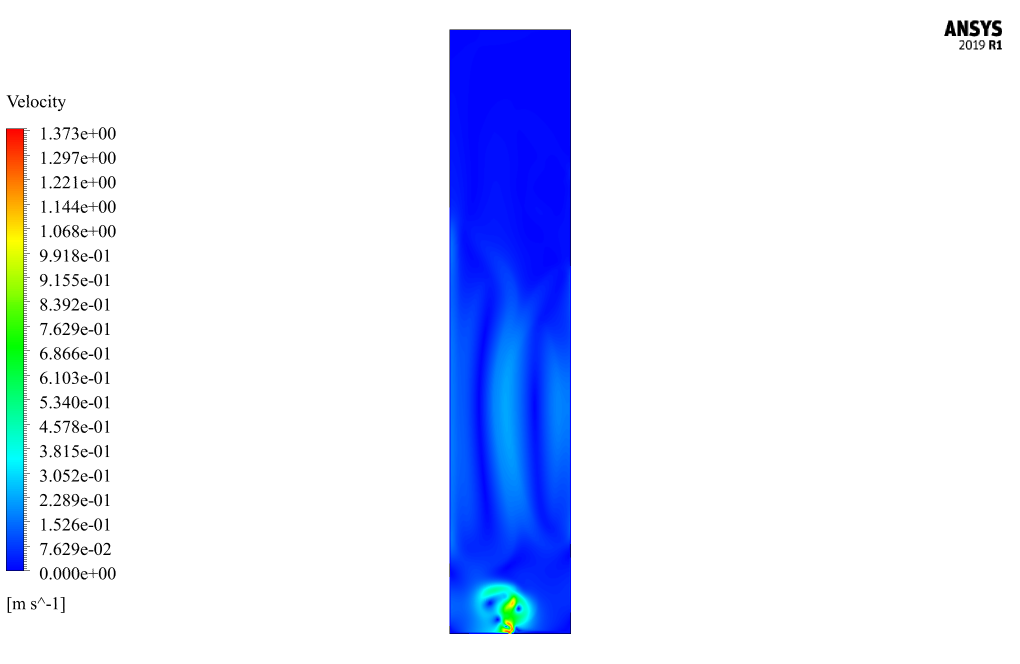
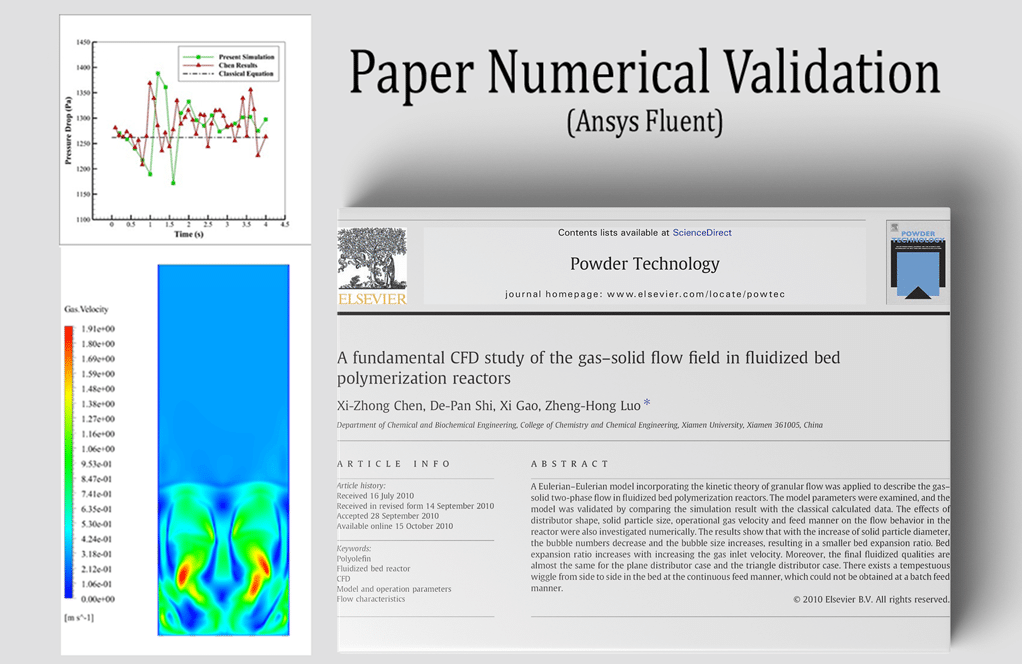
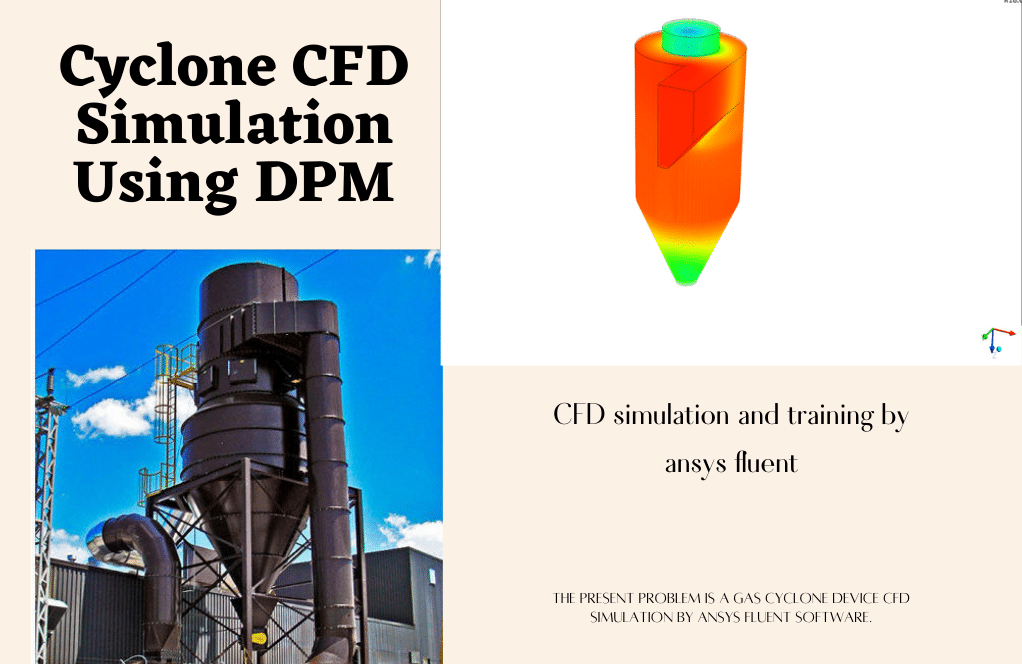

Mrs. Orie Hegmann V –
The tutorial seems to cover the mixing process well. I’m curious about the secondary flow mentioned in the conclusion. Could you explain how this secondary flow is formed within the domain during the simulation?
MR CFD Support –
In this simulation, the secondary flow is a result of the complex interaction between the carbon dioxide and ethanol as they are swirling and turbulent in nature. The varying densities, coupled with the inlet flow pressure and tank geometry, contribute to creating a circulation pattern that supports the mixing of both phases effectively. This secondary flow helps in homogenizing the components within the tank as observed in the volume fraction and velocity contours.
Emilia Bednar III –
This tutorial sounds very comprehensive. Were there any specific challenges in setting up the volume of fluid (VOF) model for the carbon dioxide and ethanol mixture, given their different properties?
MR CFD Support –
Our tutorial indeed guides through each step comprehensively. One of the main challenges in setting up the VOF model was ensuring proper distinction and interaction between the carbon dioxide and ethanol phases. Precise definitions of material properties and careful setup of the multiphase model were essential in simulating the realistic behavior of both phases during the mixing process.
Kelvin Stark –
What a fantastic example of multi-phase flow CFD simulation! This project really highlights the detailed approach MR CFD Company takes in conducting complex simulations. The simulation encompasses a sensitive mixing and provides valuable insights.
MR CFD Support –
Thank you for taking the time to write such a positive review! We’re really glad that you found the multi-phase flow CFD simulation enlightening and helpful. We strive to provide detailed and accurate simulations to assist in various research and industry requirements. Your feedback is much appreciated!
Astrid Graham –
The tutorial you provided for the ‘Mixing of Carbon Dioxide and Ethanol CFD Simulation’ was incredibly detailed and educational. I was able to follow along easily, and the visual aids really helped solidify my understanding of VOF simulations.
MR CFD Support –
We are thrilled to hear that our tutorial for the ‘Mixing of Carbon Dioxide and Ethanol CFD Simulation’ was helpful to you. It’s great to know that the detailed explanations and visual components contributed to your learning experience. We always strive to provide useful and comprehensive educational materials. Thank you for taking the time to share your positive feedback!
Prof. Jayde Kiehn –
This mixing simulation tutorial looks thorough. Is it suitable for beginners just starting with CFD to understand complex multi-phase flows?
MR CFD Support –
Absolutely! This tutorial is designed to be accessible for novice users while still delving into the complexities of multi-phase flow simulation. Through each detailed step in the procedure, a beginner gaining proficiency in CFD analysis should find the methodological approach informative and engaging.
Celestine Stokes –
The tutorial sounds very comprehensive, but can you provide details about the kind of post-processing techniques used to analyze the CO₂ and ethanol mixing results?
MR CFD Support –
Certainly! For visualizing the mixing process between CO₂ and ethanol, several post-processing techniques are utilized. This includes generating two-dimensional contours of temperature, pressure, velocity, and volume fraction for each phase. These contours allow us to observe the formation of secondary flows and analyze how they contribute to the mixing efficiency. We also examine the distribution and interaction of the two phases over time, providing insights into the effectiveness of the mixing process.
Ms. Margarett Satterfield –
This tutorial made it easy to follow the mixing process of carbon dioxide and ethanol. The details were clearly laid out, and the inclusion of the UDF for the inlet pressure provided depth to the simulation. Well done on creating an understandable guide for such a complex interaction!
MR CFD Support –
Thank you for the positive feedback! It’s fantastic to know that you found the tutorial clear and informative for the mixing process simulation. If you have any more questions or need further assistance, please feel free to reach out.
Dr. Ahmad Cruickshank –
Fantastic tutorial on VOF CFD simulation for carbon dioxide and ethanol mixing! The step-by-step guide was clear, and the inclusion of UDF for the time-dependent pressure inlet condition is quite advanced. It really helped me understand the process dynamics over the simulation period.
MR CFD Support –
We’re thrilled to hear the tutorial was helpful to you! Thank you for the kind words. It’s good to know the detailed guide and use of User-Defined Functions (UDF) for advanced boundary conditions met your expectations. If you have any further questions or need assistance with future projects, don’t hesitate to reach out.
Clotilde Little –
I just wanted to say that the quality of the tutorial for the mixing of Carbon Dioxide and Ethanol was exceptionally good! It guided me flawlessly through the complex CFD simulation process.
MR CFD Support –
Thank you for your feedback! We’re delighted to hear that our tutorial met your expectations and helped you through the complexities of the simulation. Your satisfaction with our learning materials is our top priority, and we look forward to bringing you more quality content in the future!
Fay Lynch –
I’m interested in knowing how the UDF for the pressure inlet boundary condition is determined?
MR CFD Support –
The User-Defined Function (UDF) for the pressure inlet boundary is designed to adjust the pressure at the inlet as a function of time to properly simulate the dynamic nature of the mixing process. The specific form of the UDF and the coefficients used are likely based on empirical data or design requirements for the process being simulated.
Dejah Moore –
The tutorial was very helpful! After following the steps, I understand much better how to set up and simulate the interaction between two different substances. The snapshots and clear instructions helped me to grasp the concepts quickly. Great job on providing such an in-depth learning tool!
MR CFD Support –
Thank you for your kind words! We’re thrilled to hear that our tutorial on the mixing of carbon dioxide and ethanol in ANSYS Fluent was helpful to you. If you have any further questions or need assistance with other simulations, feel free to reach out. We are always here to support your learning journey!
Derek Kerluke –
The review provided is complementing the product and does not require further information.
MR CFD Support –
Thank you for your positive feedback on our mixing simulation tutorial! We’re thrilled to hear that our detailed methodology and comprehensive results met your expectations. It’s great to see that the contours at the end of the simulation process effectively demonstrated the mixing process. We appreciate your support and look forward to providing more valuable learning experiences!
Prof. Myles Hilpert Sr. –
Absolutely impressed by the level of detail in the mixing investigation for carbon dioxide and ethanol. Seeing the secondary flow effects visualized in the volume fraction and velocity contours was enlightening. Great work on this tutorial!
MR CFD Support –
Thank you for the positive feedback! We’re delighted that you found the contour visualizations and the level of detail in our tutorial so enlightening. Our team is committed to providing comprehensive and detailed analyses. We appreciate your appreciation!
Mrs. Eden Zulauf II –
I’m curious about how the simulation results are visually represented. Are there animations or only static contours?
MR CFD Support –
In the CFD simulation results, typically both static contours and animations can be provided to visualize the mixing process. The contours offer a detailed snapshot of different simulation variables such as temperature, pressure, and concentration at specific time points. Animations, however, can give a dynamic representation of the entire simulation time frame, showing how the mixing of carbon dioxide and ethanol evolves over time.
Jamaal Kuhlman –
I found the dynamic aspect of the pressure controls intriguing in the carbon dioxide and ethanol mixing simulation. Can you tell me more about how this time-dependent pressure variation influences the mixing process?
MR CFD Support –
The time-dependent pressure variation at the inlet creates a pulsating flow, which immensely contributes to the mixing efficiency within the tank. This pulsation helps to churn the mixture and improves the contact between the carbon dioxide and ethanol molecules, promoting better homogeneity. By carefully adjusting the amplitude and frequency of the pressure variation through the UDF, it’s possible to control the mixing process dynamically and optimize it for better results.
Earnestine Von V –
I am really impressed with the results of the CO2 and ethanol mixture simulation. The detailed analysis must have provided valuable insights. Can you confirm if the UDF used for varying the inlet pressure was sufficiently incorporated during the simulation stages?
MR CFD Support –
Thank you for your kind words and interest in the carbon dioxide and ethanol mixing simulation. We can confirm that the User-Defined Function (UDF) was carefully programmed and successfully incorporated to model the variable inlet pressure over time. It allowed us to accurately capture the effects of pressure changes on the mixing process, ensuing reliable and valuable insights from the simulation outcomes.
Foster Swift –
The tutorial was very detailed and taught me a lot. The step by step explanation of operations was incredibly helpful for visualizing the complex interaction of carbon dioxide and ethanol. Great work!
MR CFD Support –
We’re genuinely thrilled to see that the tutorial was helpful and met your expectations! Thank you for taking the time to explore our product and share your feedback. If you ever have any further questions or need assistance with other simulations, please don’t hesitate to reach out.
Joanie Bosco –
I am curious, does the VOF model in this tutorial take into account the possible reactions that might occur between carbon dioxide and ethanol under certain conditions?
MR CFD Support –
No, the VOF model used in this tutorial focuses on the physical mixing of these two substances rather than any potential chemical reactions between them. To model reactive flows involving chemical species, additional setup and models such as species transport would be required.
Madyson Corwin –
The tutorial was super helpful! The part where we adjusted the UDF for variable pressure inlet really clarified how to implement changing conditions during the simulation.
MR CFD Support –
Thank you for your positive feedback! We are thrilled to hear that the tutorial was helpful and that you found the UDF implementation particularly clear. If you need any further assistance or have more questions in the future, please feel free to reach out to us.
Anissa Erdman Sr. –
I’m so impressed with the detailed analysis of the carbon dioxide and ethanol mixing simulation using ANSYS Fluent. The tutorial must be a treasure trove of valuable insights for anyone interested in multiphase flow modeling. The fact that it uses the VOF model for two substances with a transient solver really showcases the dynamic capabilities of the solver. Adding the effects of temperature and variable inlet pressure makes the simulation even more realistic. Great job on the explanation!
MR CFD Support –
Thank you for your kind words! We’re glad to hear that the tutorial was helpful and provided you with valuable insights into multiphase flow modeling using ANSYS Fluent. It’s always our goal to offer comprehensive and content-rich tutorials for our users. If you have any further questions or need additional information, feel free to reach out! Happy modeling!
Edwardo O’Reilly –
Can you explain if this simulation accounts for the differences in viscosity between carbon dioxide and ethanol?
MR CFD Support –
Yes, the simulation takes into consideration the different properties of carbon dioxide and ethanol, including their viscosities. The VOF model in ANSYS Fluent is capable of distinguishing and properly simulating the behavior of both substances within the same domain according to their unique physical properties.
Braeden Reinger –
What are the final delivery items for this CFD simulation?
MR CFD Support –
The final delivery items for the ‘Mixing of Carbon Dioxide and Ethanol CFD Simulation’ project include detailed contour plots for temperature, pressure, velocity, and volume fraction for each phase at the last second of the simulation. Additionally, reports on the secondary flows formed during the mixing process and its effects on the blending of carbon dioxide and ethanol are also provided as part of the solution process outcomes.
Zachary Heathcote Sr. –
I appreciate the detailed explanation in the mixing simulation of carbon dioxide and ethanol. The results shown in the contours are quite insightful for understanding the interaction between these two substances. The time step of 0.5 seconds provided a crisp resolution over the 180-second analysis duration.
MR CFD Support –
We’re thrilled to hear that you found the simulation details and resulting contours insightful! Understanding interactions between various substances is crucial for a multitude of industrial applications, and we’re glad our product could assist you in your analysis. Thank you for your compliments on the time-step resolution; precise simulation outcomes are what we strive for. If you have any more feedback or need further assistance, we’re always here to help.
Izaiah Huel –
The step-by-step visuals on the mixing of carbon dioxide and ethanol made the concepts crystal clear. The balance between thorough explanation and readability is just perfect in this simulation tutorial.
MR CFD Support –
We’re delighted to hear that our tutorial on the Mixing of Carbon Dioxide and Ethanol CFD Simulation was clear and helpful for you! Thank you for your positive feedback, and we truly appreciate the time you took to let us know. If you have any more questions or need further assistance, feel free to reach out!